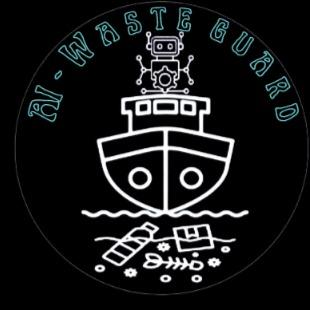AI-WasteGuard
Deep Learning for Water Body Waste, Waste Detection & Classification
Created on 16th April 2024
•
AI-WasteGuard
Deep Learning for Water Body Waste, Waste Detection & Classification
The problem AI-WasteGuard solves
PROBLEM:
Over 400 million tons of plastic are produced every year for use in a wide variety of applications.
At least 14 million tons of plastic end up in the ocean every year, and plastic makes up 80% of all marine debris found from surface waters to deep-sea sediments. IN INDIA, EVERY YEAR 3.5 MILLION TONNES OF OCEAN WASTE IS PRODUCED , OUT OF WHICH 0.6 MILLION TONNES IS PLASTIC WASTE.
Problem with Current Solutions: Population Growth & Urbanization: Rapid urbanization and Poulation Growth can strain traditional water management systems, leading to challenges in providing adequate water supply and sanitation services to urban populations.
Infrastructure: Many traditional water management systems are outdated and not equipped to handle the current needs. Updating infrastructure can be costly and time-consuming.
Water Quality: Traditional methods may not always address water quality issues, such as contamination from pollutants or pathogens.
Sustainability: Traditional methods may not always be sustainable in the long term, leading to over-extraction of water resources or degradation of ecosystems.
SOLUTION:
We are developing an innovative solution leveraging YOLO deep learning techniques to tackle the pressing issue of marine waste detection and management. Our system utilizes real-time object detection to identify various types of waste in marine environments swiftly and accurately. By employing YOLO's efficiency and precision, we enable timely intervention and effective management strategies to mitigate the harmful impact of marine debris on ecosystems and wildlife.
USE CASES:
Integrate ENSEMBLE to merge various AI models like yolv, ResNet, VGG16 and so on to predict differnt types of waste in the sea preciosely. Integrarting this model with harware in the current ships, sumarine, etc for large scale effect
Challenges we ran into
--Finding the Suitable Dataset and Converting It into a Suitable Training Dataset for ML Model:
Error: Difficulty in finding a dataset that accurately represents the problem domain of water body waste detection and classification.
Solution: Conducted thorough research to identify and collect relevant datasets. Preprocessed the data to ensure it aligns with the requirements of the ML model.
--Bugs in Flask:
Error: Encountered bugs in the Flask framework while developing the web application.
Solution: Debugged the Flask code to identify and fix the issues. Ensured proper handling of requests and responses to and from the ML model.
--Tuning the ML Model:
Error: Initial ML model performance was not satisfactory, requiring tuning for better accuracy and efficiency.
Solution: Experimented with different hyperparameters, algorithms, and data preprocessing techniques. Used techniques like cross-validation to evaluate and improve the model performance.
--Facing Some Frontend (HTML/CSS/Javascript Issue):
Error: Faced issues related to the design and layout of the frontend interface using HTML/CSS/Javascript.
Solution: Troubleshooted the HTML/CSS code to resolve layout issues, ensure responsiveness, and improve user experience. Used libraries like Bootstrap for easier frontend development.
Tracks Applied (1)
